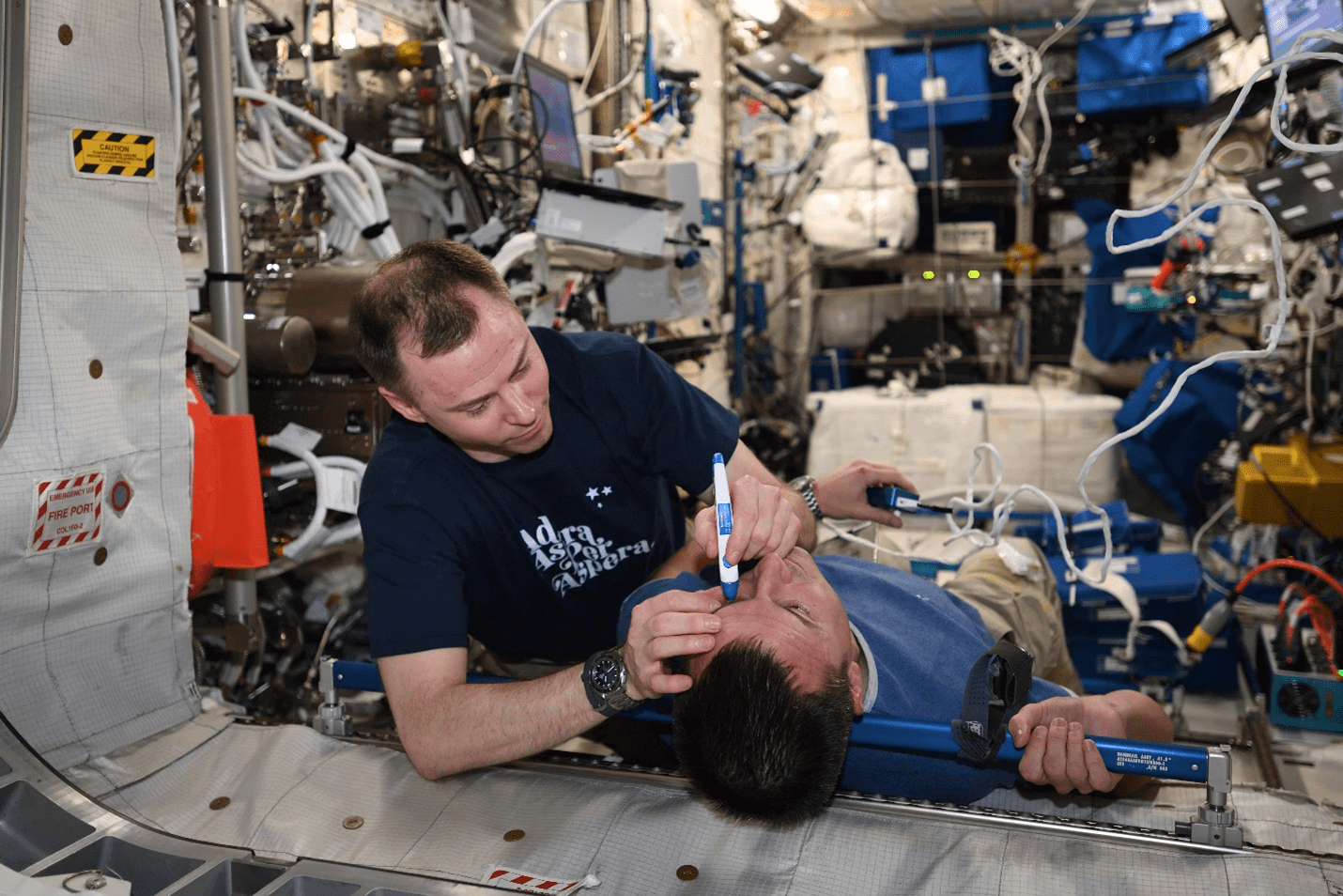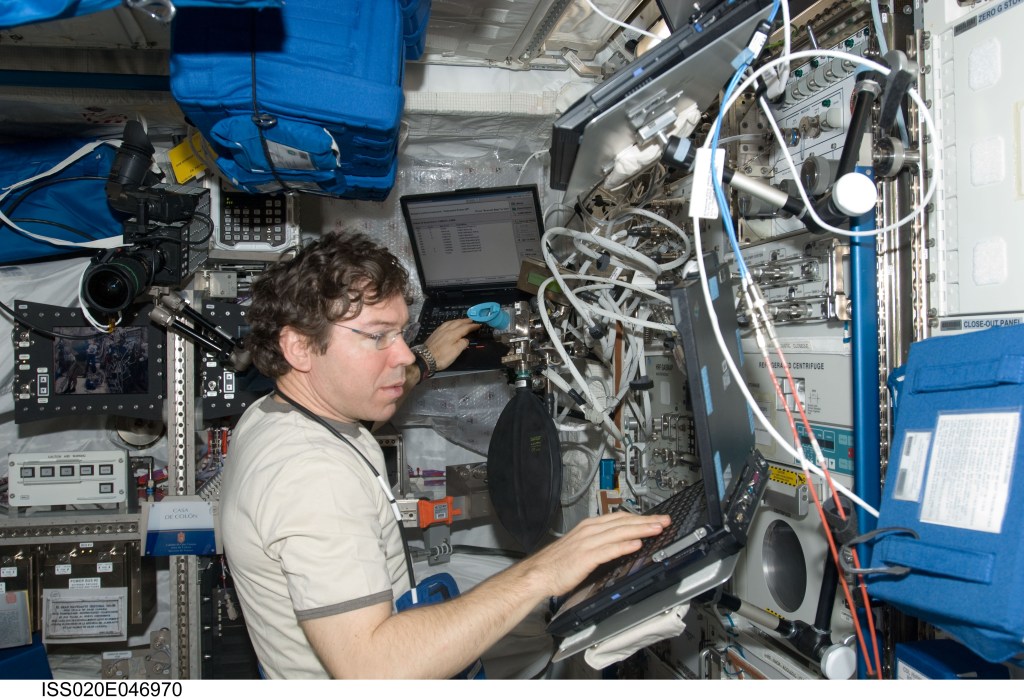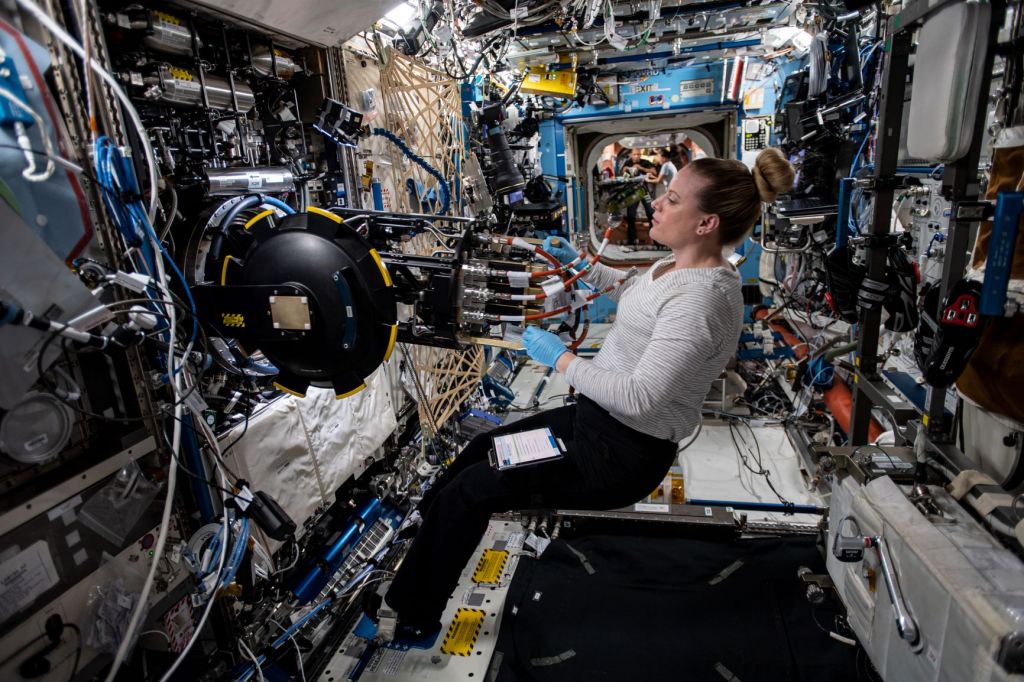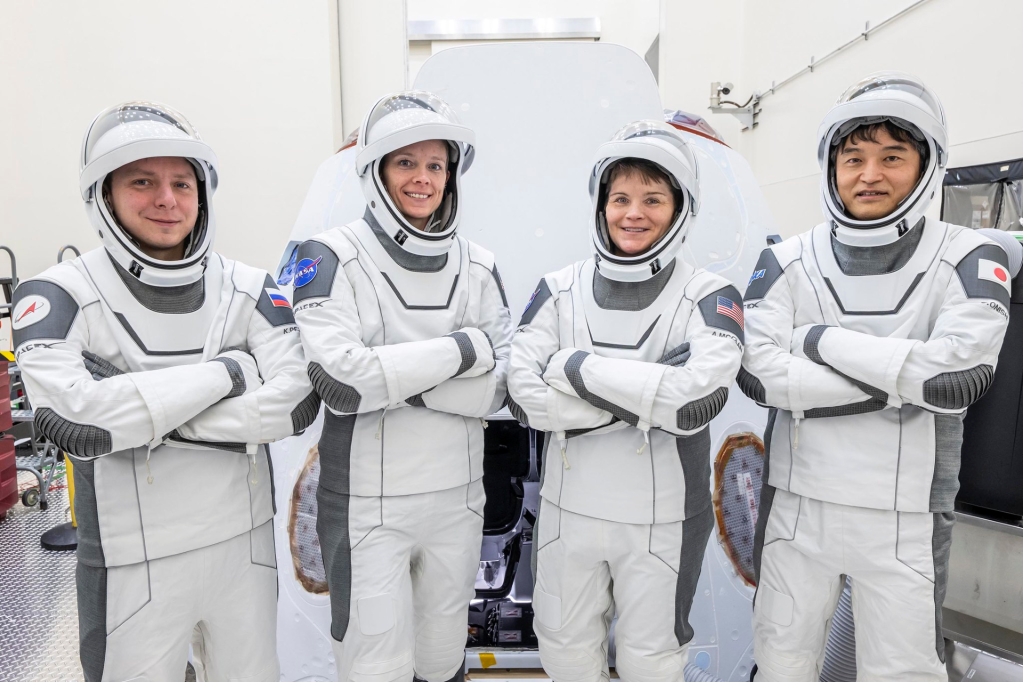Brain Fluid Pressure

Description
This study aims to examine the relationship between fluid pressure within the head (known as intracranial pressure) and a collection of eye and brain changes seen after long-duration missions known as spaceflight associated neuro-ocular syndrome (SANS). Scientists hypothesize that the redistribution of body fluids in microgravity may increase intracranial pressure and contribute to the condition. Measurements of pressure in the brain, eyes, and neck veins taken shortly after crew members return to Earth, when compared to preflight baselines, will enable researchers to establish whether spaceflight is associated with these changes. Analyzing samples of spinal fluid, blood, and urine may also allow scientists to identify biomarkers associated with these changes.
Impact
Data from this study could help clarify how SANS progresses. Insights could also help inform treatment strategies, as well as predictions about which crew members are at heightened risk.
Type of study: Flight
Formal project title: Direct ICP Monitoring and Spaceflight Associated Neuro-ocular Syndrome (SANS) Biomarker Identification




























